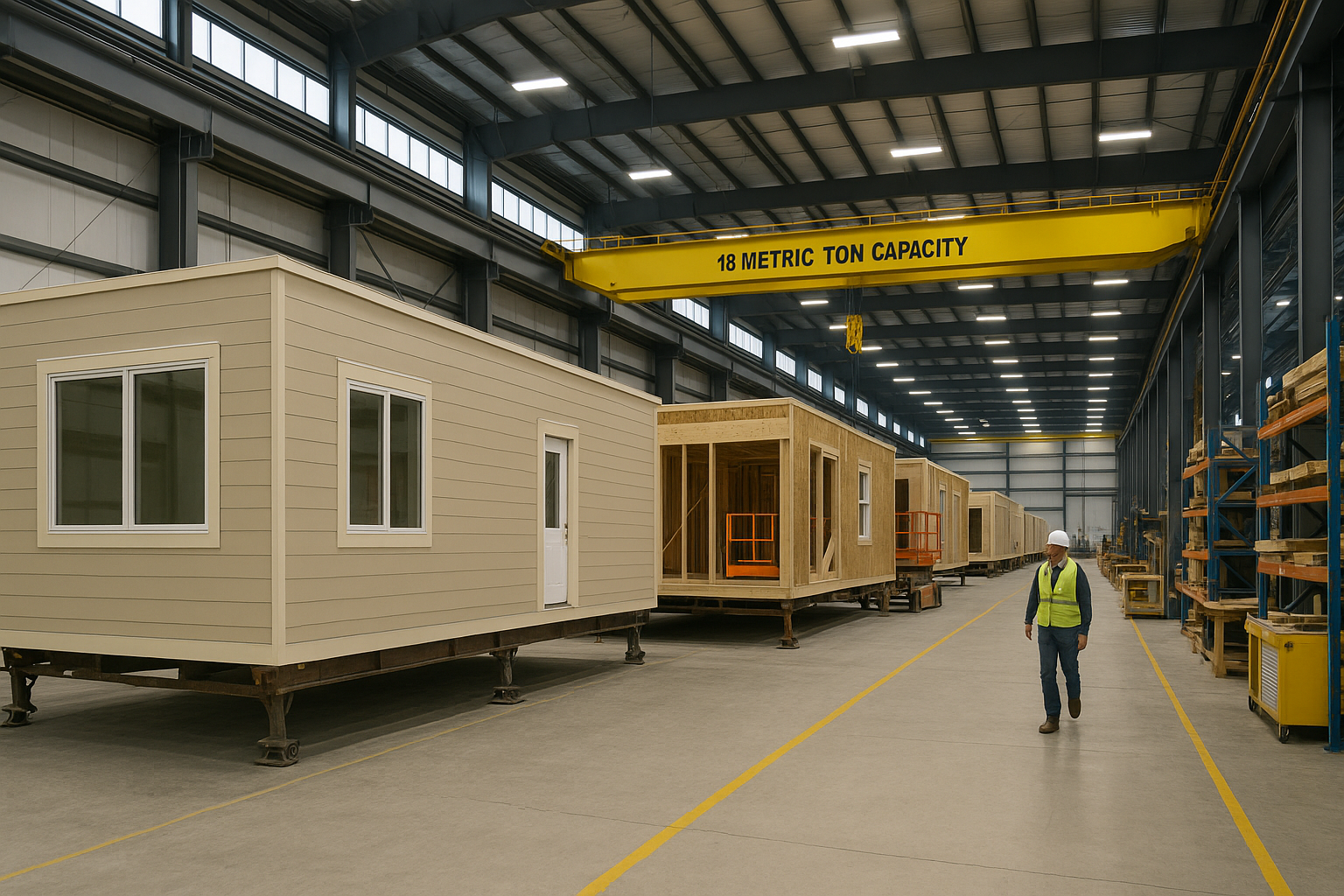Construction ERP
Optimizing Equipment Uptime with Predictive Workflows in Merlin AI
Last updated:
September 29, 2025

Heavy-equipment downtime can derail entire construction timelines—and trigger cascading cost overruns. A single unplanned repair on a critical crane or excavator can idle crews, delay milestones, and eat into profit margins. Traditional maintenance strategies—either reacting only after a breakdown or following fixed-interval service schedules—fail to prevent these disruptions. Merlin AI addresses this challenge through its Core Platform and Operations Copilot, delivering real-time equipment insights, automated maintenance workflows, and intelligent inventory management to keep machines running when you need them most.
1. Real-Time Equipment Monitoring
Merlin AI’s Operations Copilot continuously ingests live telemetry and sensor data from on-site machinery: engine diagnostics (temperatures, pressures), hydraulic-system metrics, vibration signatures, and fuel consumption. It combines those feeds with environmental inputs—weather forecasts, dust levels, humidity—to provide a holistic view of each asset’s condition.
All data streams converge in Merlin’s unified dashboard, updated in real time. Project managers and maintenance leads can:
- Watch key indicators (e.g., bearing temperatures, oil-pressure trends) across the entire fleet.
- Drill down into any machine to review its recent history, anomalies, or fault codes.
- Receive mobile alerts the moment an asset crosses a user-defined threshold.
This always-on visibility replaces reactive site visits and guesswork with objective, data-driven oversight. When a bulldozer’s vibration spectrum creeps beyond normal limits, the system flags it immediately—no manual logbooks required.
2. Automated Maintenance Workflows
Monitoring is only half the battle. Merlin AI’s agentic workflows take the next step by converting insights into actions:
- Anomaly Detection Triggers: When the system identifies an out-of-range condition—say, a sudden spike in hydraulic-pump current—it automatically creates a maintenance task in your existing CMMS or scheduling tool.
- Smart Scheduling: Operations Copilot cross-references project plans and crew rosters to suggest the least disruptive service windows, then posts calendar invites to mechanics and supervisors.
- Escalation Chains: If a red‑level alert remains unaddressed beyond a configurable time limit, Merlin escalates via email or SMS to ensure accountability.
These automated workflows eliminate email back‑and‑forth and manual ticket creation. Teams focus on diagnosing and repairing, not chasing paperwork.
3. Intelligent Inventory Management
No predictive system is complete without the right parts on hand. Merlin AI integrates with your procurement or inventory platform to deliver Operations Copilot–powered stock oversight:
- Automated Counts: Real-time yard scanners and RFID readers sync counts into Merlin’s dashboard, so you always know current spare-part levels.
- Consumption Forecasting: By correlating past maintenance events with failure probabilities, the platform predicts future part demand—down to individual seals and filters.
- Reorder Recommendations: When inventory falls below safety thresholds, Merlin auto-generates purchase-order drafts for approval, aligning deliveries with upcoming maintenance windows.
This intelligent replenishment avoids costly emergency shipments and stockouts that can stall repairs for days.
4. Data-Driven Insights & Continuous Improvement
Beyond day‑to‑day alerts, Merlin AI’s Core Platform consolidates maintenance histories, failure records, and cost data across projects:
- Failure Pattern Analysis: Machine‑learning algorithms surface recurring fault modes, enabling teams to update preventive‑maintenance checklists or choose higher‑durability components.
- Performance Benchmarking: Compare mean‑time‑between‑failures (MTBF) and maintenance spend per hour of operation across equipment classes, crews, and job sites.
- Executive Dashboards: High‑level views of fleet health, maintenance budgets, and uptime trends support data‑backed capital‑planning decisions.
These insights transform isolated fixes into enterprise‑wide reliability strategies.
5. Getting Started: A Five‑Step Rollout
- Connect Telematics & Sensors: Plug Merlin AI into your OEM telematics feeds or deploy low‑cost vibration and temperature sensors on critical assets.
- Activate Operations Copilot: Enable the equipment‑monitoring, automated‑workflow, and inventory modules—no custom code required.
- Define Thresholds & Roles: Configure alert levels for each metric and assign clear ownership for triage and repair tasks.
- Pilot & Validate: Run a three‑month pilot on a subset of your fleet. Compare Merlin’s warnings to actual breakdowns to refine alert sensitivity.
- Scale & Optimize: Once confidence is high, extend predictive workflows to all major equipment classes and align your CMMS for fully automated work‑order generation.
Conclusion
In a construction environment where every hour of machine uptime counts, Merlin AI’s combination of Core Platform centralization and Operations Copilot intelligence delivers a proactive, streamlined path to equipment reliability. Real-time monitoring replaces reactive repairs, agentic workflows automate ticketing and scheduling, and smart inventory keeps the right parts on the shelf. The result is fewer unplanned stoppages, lower maintenance costs, and more predictable project progress—because when your machines perform, so does your bottom line.
FAQ's
1. What is the goal of predictive maintenance in construction?
The goal is to proactively prevent unplanned equipment breakdowns by analyzing real-time data to forecast when an asset is likely to fail, allowing for maintenance to be scheduled at the least disruptive time.
2. What are the main consequences of heavy-equipment downtime?
Downtime causes delays to entire construction timelines, triggers cascading cost overruns due to idle crews and missed milestones, and eats directly into a project's profit margins.
3. What kind of data does equipment telematics provide for maintenance?
Telematics provides live sensor data, including engine diagnostics (temperature, pressure), hydraulic-system metrics, vibration signatures, and fuel consumption, to give a holistic view of the asset's condition.
4. How does an AI platform interact with a CMMS?
The AI platform automates workflows by integrating with the CMMS to automatically create maintenance tasks (work orders) when it detects an out-of-range condition, eliminating manual ticket creation.
5. How does AI help manage spare parts inventory in construction?
AI uses consumption forecasting by correlating past maintenance events with failure probabilities to predict future part demand, allowing the system to generate reorder recommendations and avoid stockouts.





